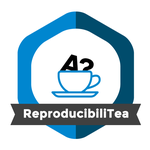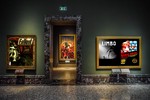Academia is Surveillance
To come right out with it: Transparency is scary.
Note, this is quite a weird statement for me to make. I have publicly advocated for more transparent research, I have published about it.
2 Years ReproducibiliTea Aalto
Today, 2 years ago we started the ReproducibiliTea chapter Aalto (then AERIS). In this post I want to briefly reminisce over that time, about what I learned, and what tips I would give to others who have or might want to start a journal club.
My Two Cents on the "Are Games Art"-Debate
Recently we presented our paper on the art experience of games at CHI Play ’21. Both in the paper and the video, we point out that the goal of the work was not really to make an argument that games are art, but that they are experienced as art.
NHST at CHI Play - A few months later
So in April we submitted a paper about the state of NHST and QRPs at CHI PLAY. At the end of July we published the accepted Preprint, and now it will is officially published. I want to use this post to talk about the behind the scenes of the paper a bit, discuss two papers that came out in the meantime and pick up some discussions I had at CHI PLAY.
Video Games Expertise
In this post, I briefly introduce the empirical aesthetic concept of Expertise, discuss how it effects the art experience, explore equivalents when studying games, and muse about what expertise might mean for the experience of games.
Comparing Player Experience and Empirical Aesthetic Models...
…and why it matters: A short overview of the Player Experience and Empirical Aesthetic perspective on videogames
Videogames in Empirical Aeshtetics
A brief discussion of how videogames could be studied in empirical aesthetics.
How to get a BEST prior from a known effect size
As I had massive problems finding a clear instruction on how to turn a known effect size into a prior for a BEST (Kruschke 2013) analysis, I decided to write a short tutorial on how I managed it myself.
Hello World
What would a blog be without it?
…except less cliche?

